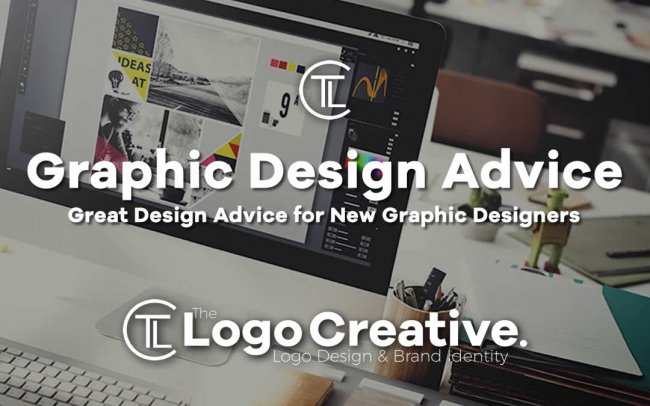If you love creating art, graphic design may be the best choice for you. Graphic Design can seem to be the best job in the world, especially for beginners. However, this is not always true. As long as you have passion and creativity, a career in graphic design can open doors you didn’t even know existed.
Beginners will take smaller projects before moving on to greater ones. This could include a small project like simple Web designs are not too complicated compared to full-blown complicated logo design or full branding design project that require a high level of attention and knowledge in different types of designs.
Graphic design newbies are advised to gather knowledge and resources through courses. Nowadays, graphic design courses are highly available online, even without a degree. Still, gaining experience on the job is the best teacher
Here’s a quick guide for newbie graphic designers:
Table of Contents
Bright, pop-up colors have become a trend
This technique is called the colour pop technique. It has now become a trend as more and more designs move to eye-catching graphic designs. Most designs with less text use this technique to make a statement. This technique is characterised by high-contrasting, bright colours, that somehow blend together and form an aesthetically-appealing artwork.
There was a time when metallic designs were a huge hit. Instagram and Pinterest, for instance, have enabled this trend and somehow formed a new art movement using bright colours that really pop. These emerging colour trends are very popular and really caught the attention of the people.
Last year was no stranger to these new trends. Bold and vibrant colors have become an aesthetic staple over the years, as a result of the flat design movement. In 2014, Google Material Design has launched its vibrant palette, which further pushed this trend online.
More consumers are embracing colors and designers recognize the need to add this colour in their designs. The reincarnation of bold colours is inspired by the hip and bold 80’s Technicolor era.
Focus on Improving Fonts
Clarity and readability are vital parts of a graphic design. Textual styles have a colossal effect on your artwork. Figuring out how to pick the correct textual style can highlight the best features of your design. Try not to constrain your designs to just a single textual style – consider unheard of options. Ace this ability by first trying different things with various sorts of textual style styles. Investigate new textual styles and attempt to blend and match. See which text styles look great; piece those which don’t look great.Experimenting, trial and error often leads to great results.
Choosing the right font can be hard especially if you’re selecting from a pile of fonts. It’s important to know the main categories of each font. There are 4 major font families:
Serif
This font family looks more serious and traditional. Serif fonts have little lines attached at the end of each letter.
Sans-Serif
Sans-Serif means no serif or no “little feet” attached to the ends of the letters. This font type is more modern and common.
Script
Scripts are not necessarily handwritten or cursive fonts. Scripts have connecting letters. This font is used for themes of elegance and creativity
Decorative / Display
Also called “novelty”, decorative means these types of fonts are created to get the reader’s attention. These fonts are unusual and are aimed to illicit a particular effect.
Create images with consistency
This rule is effective when you’re designing a website theme which requires a lot of work. Your designs need to match up together and represent the brand’s persona or the message you need to pass on. When designing a website, designers need to make each and every detail steady and consistent with the entire theme – from images to thumbnails, and even the text style. The graphics, outlines, pictures, and lines should remain consistent in the entirety of your designs. This gives your artwork a standout look.
Everything in your design should be consistent with the overall theme. This trend is evolving and is an effective way to convey the brand’s message. Consistency is the key to unlock brand success. Designers developing their visual voice on social media can take time. But through a style guide and a consistent theme, your design will definitely stand out.
If you want to create consistency, ask yourself these questions first:
- What makes you different from your competitors?
- How do you want people to experience your product or service?
- What kind of emotions do you want your brand images to evoke?
Pay attention to styling characters & paragraphs
Remember that character & paragraph styling are two essential elements in your design. Your characters and paragraph style should mix easily to make one synchronized structure. The header textual style ought to be steady with the character and paragraph styles. Adobe InDesign is a software you can use to bring these improvements effectively and keep up this consistency.
Draw your design
Nowadays, graphic designers would do it the easy way and simply look structures on Google which, they would then be able to alter and improve. They regularly overlook the intensity of a decent sketch and how it can impact their artwork. Did you know? Outlining or sketching is an extraordinary method to give an individual and one of a kind touch to your visual communication. When you’re finished drawing on a bit of paper, you would then be able to check it and alter it through Illustrator or Photoshop. This gives your artwork a personal touch.
Use Flat Designs
Flat designs have become a graphic design trend recently. Flat designs require a sense of balance. It is a minimalist design which lies on the principle of order and clarity. Every year, flat designs grow more sophisticated, and now, it’s widely used in most web and graphic designs.
The flat design opposes all flashy illustrations and animations. It’s a movement towards a more simple, modern, and digital aesthetic. A great example of this is Microsoft. Microsoft was one of the pioneers of the flat design with the Windows 10 interface. It has converted an app into a small illustration with icons. A flat design lacks ornaments but it doesn’t mean it’s boring. A quick trick used by designers is to use bright and contrasting colours to make illustrations and buttons pop from backgrounds. On the contrary, flat designs grab attention and serve as a guide to the user’s eyes. The main principles of a flat design are simplicity and minimalism.
Use Lines & Spaces
Most graphic designers underestimate the power of lines and spaces. Separate lines to make a bolder look. It emphasizes the message, rather than the design. It helps to get the message across. You can use half lines or thick line to push out the text in your design. Apply typography and you will get an impactful design.
Don’t be afraid of white spaces
Designers who are afraid of white spaces tend to over-design and create a crowded artwork. When using white spaces, you need to be careful and achieve a perfect balance. One of the major users of this kind of design is Apple. It’s using minimalist designs in almost all of its ads and marketing materials.
The greatest asset of one’s design is white spaces. It should be seen as a positive side and not a negative one. How to do it? Try using a nice font and use monochromatic colours. Most graphic designers turn to a black on white artwork, using black font colour on top of a white background in the image.
There are two kinds of white spaces in graphic design – the micro white space and the macro white space. The smaller elements of white space in the design are called micro white space. Meanwhile, the larger white space elements of a design are called a macro white space. Most people would focus on the tangible – what is there? However, the nothingness is also an element which shouldn’t be neglected.
There are active white spaces and passive white spaces. What is the difference between the two?
- Active White Space –designers make an effort to add this to their design and is often asymmetrical
- Passive White Space – this is something that occurs naturally, like the spaces between lines or an element
Designers should not just focus on the active white space but also be mindful of the passive white spaces and its impact on their design.
Achieve Balance
Graphic design is all about achieving balance. Symmetry and asymmetry are both important elements of a great graphic design. For greater impact, your design should be a harmony of both. Try viewing your design from different perspectives and use measurements if necessary.
Italics are magical
Italic fonts give off a sophisticated and soft side to your design. Be careful, as it is also tricky. Most graphic designers balance their artwork with a mix of straight and italics, to make a statement. In web design, italics are used as subheaders. Now, most websites use Italics in bold sizes for a more eye-catching look.
Find this useful? Share them with your friends.
Start Learning today a great place to start learning online is Skillshare start your free trial and with the ad below you get 2 months free online learning.
 Author Bio
Author Bio
Fazreen Razeek from Grafdom has served the digital industry for over 5 years. He collaborates with agencies, event organizers, and suppliers to develop and execute their marketing strategies. He is passionate about education technology and also writes for various publications. A graduate with High Distinction from the Edith Cowan University, Perth, Australia, Fazreen holds a Bachelor’s Degree with a double major in Marketing & Management.

